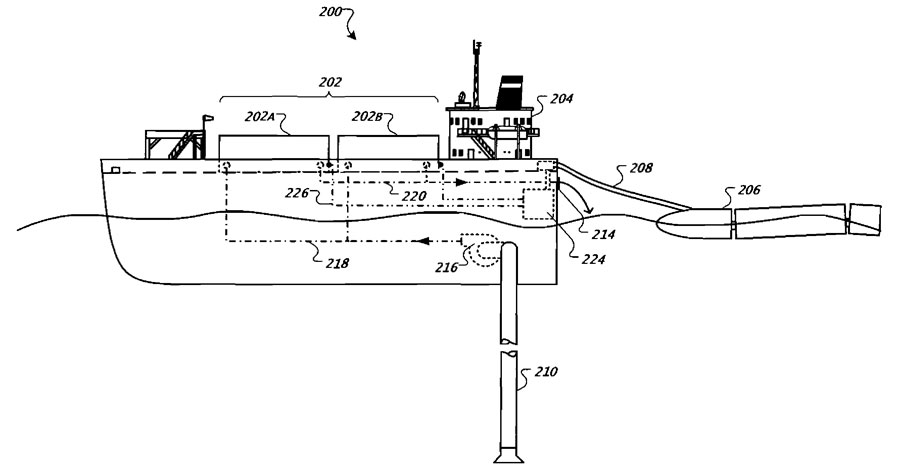
Google Mystery Barges Causing Viral Speculation
The Google mystery barges spotted on both coasts have gone viral as media outlets and the social media sphere go crazy with speculation on what they might be – floating Google Glass stores? A floating datacenter? Or a Silicon Valley secessionist plot? Speculation is running rampant.
 For those that might not be up to speed, mystery seafaring structures have cropped up in San Francisco and Maine’s Portland Harbor that have created a wave of speculation on what they could potentially be. The barge itself is four stories high, built out of shipping containers, and measures a length of 250-feet long and 70-feet wide.
For those that might not be up to speed, mystery seafaring structures have cropped up in San Francisco and Maine’s Portland Harbor that have created a wave of speculation on what they could potentially be. The barge itself is four stories high, built out of shipping containers, and measures a length of 250-feet long and 70-feet wide.
Two competing theories about what it might be have cropped up. The first theory first introduced by the CNET reporter Daniel Terdiman (who first broke the mystery barge story), was that the barges are an elaborate plan to sell Google Glass through a unique store front that could travel from port to port peddling the wearable computers.
Per Terdiman:
“I was contacted by someone who said he had knowledge that the project in the works is a Google store of some kind. The tipster, who is well-connected in Silicon Valley but asked to remain anonymous, told me that he had heard from multiple sources at Google that the company plans to float the Glass stores from city to city by rivers, and that the idea for the project came straight from either Larry Page or Sergey Brin, Google’s founders. Finally, he said, the idea is in part that Google wants to launch stores without looking like they are trying to chase Apple.”
While this idea seems a bit ridiculous – especially for a company where scale means everything — local television station KPIX has reported that Google has in fact failed to acquire permits for such a venture from the San Francisco Bay Conservation and Development Commission.
Another popular theory, and the one that we’re more inclined to believe, is the idea that these are experimental floating datacenters, using sea water as a cooling source and ocean waves as an energy generator. Adding credence to this theory is a patent application that Google filed in 2007. Here is an image from the patent which gives color to the idea:

From the Google patent:
“Public use of the internet continues to grow, with millions of people now accessing the global network. The bandwidth demanded by each of those users also continues to grow substantially…The internet backbone also needs to grow to support the additional demand from all these new users and new services…it can be beneficial to distribute computing power closer to users…Also, transient needs for computing power may arise in a particular area. For example, a military presence may be needed in an area, a natural disaster may bring a need for computing or telecommunication presence in an area until the natural infrastructure can be repaired or rebuilt, and certain events may draw thousands of people who may put a load on the local computing infrastructure. Often, such transient events occur near water, such as a river or an ocean.”
While this is a popular theory, still a third theory is finding traction based on a CNN article from March 2009, titled “City floating on the sea could be just 3 years away.” In this view, the barges represent a sort of political statement as floating compact societies free from overbearing laws that constrain progress.
From the CNN story:
Patri Friedman, a former Google engineer who now works for the Seasteading Institute, said floating cities are the perfect places to experiment with new forms of government .Some of the new political ideas the group is tossing around include legalizing marijuana and making intellectual property communal — so that everyone would take ownership in art produced on the city at sea. “The idea isn’t just about getting away from rules or getting rid of rules. It’s about a system that encourages experimentation with different political systems,” he said.
This view of the barges has gained some steam thanks to a timely Salon article that was published this past Monday, titled “Silicon Valley dreams of secession,” inspired by a speech by Balaji Srinivasan at last week’s Y Combinator titled “Silicon Valley’s Ultimate Exit.” In the speech, Srinivasan asks the question, “Is the USA the Microsoft of Nation?” It’s a question which he unpacks decidedly unfavorably, ultimately concluding that an Ayn Randian exit may be the next logical progression for the tech-minded.
Per Salon:
Virtual secession, argues Srinivasan, is just natural evolution. Once upon a time, people seeking better lives left their broken states to immigrate to the U.S. Now, it is time for their descendants to emigrate further, except this time they don’t need to go anywhere physically, except into the cloud. “Exit,” according to Srinivasan, “means giving people tools to reduce the influence of bad policies over their lives without getting involved in politics … It basically means build an opt-in society, run by technology, outside the U.S.” And this time around, no need to fear that a latter-day Lincoln will mobilize troops to defend the integrity of the United States, because “it is not clear the U.S. government can ban something that it wants to ban anymore.”
While it remains unclear what the Google structures are, the speculation continues to run wild. Getting in on the fun is the Google Barge itself, which has purportedly taken on a Twitter personal of its own (@GoogleBarge), tweeting such updates as “Any attack made by the Rebels against me would be a useless gesture, no matter what technical data they have obtained,” and “@KenBastida you called me a giant floating elephant. Now you’re getting warmer to what I can do. Selling eyewear is beneath me.”
We’ll look forward to inevitably seeing what it all amounts to.
Related items:
Facebook’s Open Compute Cold Storage on Display
Big Data’s Evolving Role in Government Economic Policy
Rudin: Big Data is More Than Hadoop






























